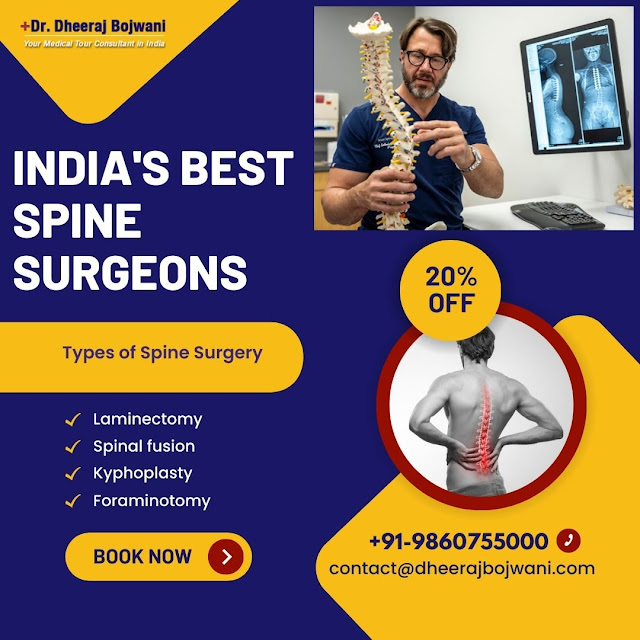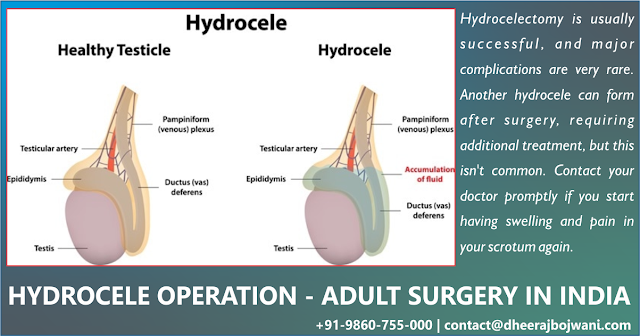Artificial Disc Replacement For Degenerative Disc Disease Of The Cervical Spine
Introduction
An artificial disc replacement
is a device which is implanted into the spine to imitate the functions of a
normal disc. There are many artificial disc designs and it is classified into
two types: total disc replacement and disc nucleus replacement. With a total
disc replacement, all or most of the disc tissue is removed and a replacement
device is implanted into a space between the vertebrae. With a disc replacement,
only the center of the disc is removed and replaced with an implant and the
outer part of the disc is not removed.
Usually the artificial discs
are made of metal or plastic like materials or a combination of the two. Some
devices have a soft, compressible plastic-like piece between these plates and
these devices allow the motion by smooth, curved surfaces that slide across
each other.
Cervical Degenerative Disc Disease
The cervical disc degeneration
is a common cause of neck pain that is most frequently felt as a stiff neck.
The cervical degenerative disc disease is less common than the disc
degeneration in the lumbar spine since the neck is subjected to far less torque
and force. A fall or a twisting injury to the disc space can spur the
degeneration and accumulated wear and tear on the disc over time and this can
also lead to the neck pain caused by the disc degeneration.
Treatment of Cervical Degenerative Disc Disease
The general treatment for the
cervical degenerative disc disease is largely the same for the degenerative
disc disease in the lumbar spine. The conservative care is recommended as the
primary strategy and the surgery is considered if a concerted effort at a
conservative care fails to provide adequate pain relief or a patient’s daily
activity has been significantly compromised.
- Conservative Care: Patients may get relief from applying ice or heart, exercising the neck and shoulder areas to relieve stiffness and maintain flexibility and using medications to control pain and inflammation. Additionally, neck appliances or traction may be prescribed.
- Exercises: Stretching as many dimensions on the neck
as possible is essential to maintain the flexibility in the neck and
relieve the chronic stiffness. A specific set of exercises developed by a
physician or a physical therapist can be done several times a day.
- Over the counter and
prescription medications: These
include non-steroidal anti-inflammatories (NSAIDs) and pain relievers such
as muscle relaxants or the narcotic pain medications.
- Physical Therapy or
chiropractic adjustment: It
may provide relief by helping the patients to extend the neck and
shoulders to increase the disc space temporarily in the affected vertebral
segment.
- Using a cervical collar,
cervical pillows or neck traction: It
will be recommended to stabilize the neck and improve the neck alignment
so that the disc compression is not exacerbated as the patient sleeps or
relaxes at home.
Cervical Spine Fusion Surgery for Degenerative Disc Disease
If the pain is not relieved
adequately within months of conservative care and it is interfering your daily
activities then the surgery is considered. Fusion may be recommended to stop
the motion of the affected cervical vertebral segment. It entails the removal
of the disc, decompression of the nerve root and insertion of a bone graft or a
metal cage device to help maintain or reestablish the normal height of the disc
space as well the neck stability and alignment. A cervical plate may be used to
promote the fusion between the two vertebrae.
Generally, a one-level fusion
is done and in very rare circumstances a two-level fusion is considered. The
surgery for neck pain is much less reliable than the surgery to relieve the arm
pain from the cervical degenerative disc disease. Hence, if the predominant
symptom is neck pain, then fusion surgery should be recommended as the last
resort.
Artificial Intervertebral Disc Arthroplasty
Artificial intervertabral disc
arthroplasty (AIDA) is an alternative for patients with symptomatic cervical
DDD. In AIDA, an artificial disc devise is secured in the prepared inter-vertebral space than in the bones. The surgical procedure is similar to
the anterior fusion.
Conclusion
Artificial disc replacement for
the degenerative disc disease of cervical spine is offered at affordable price
at Dheeraj Bojwani Consultants in India. Book your free consultation for low
cost artificial disc replacement with the best surgeons and the top hospitals
in India.



